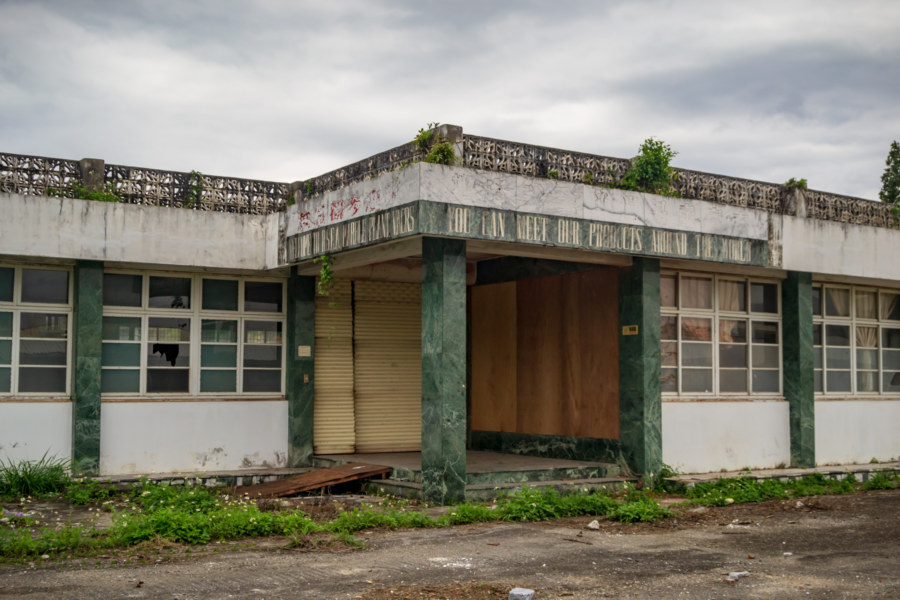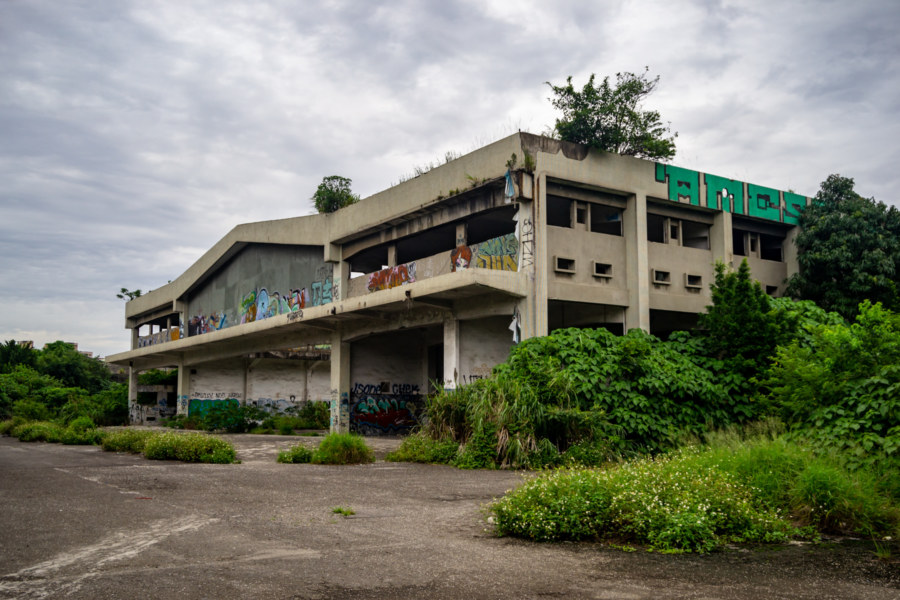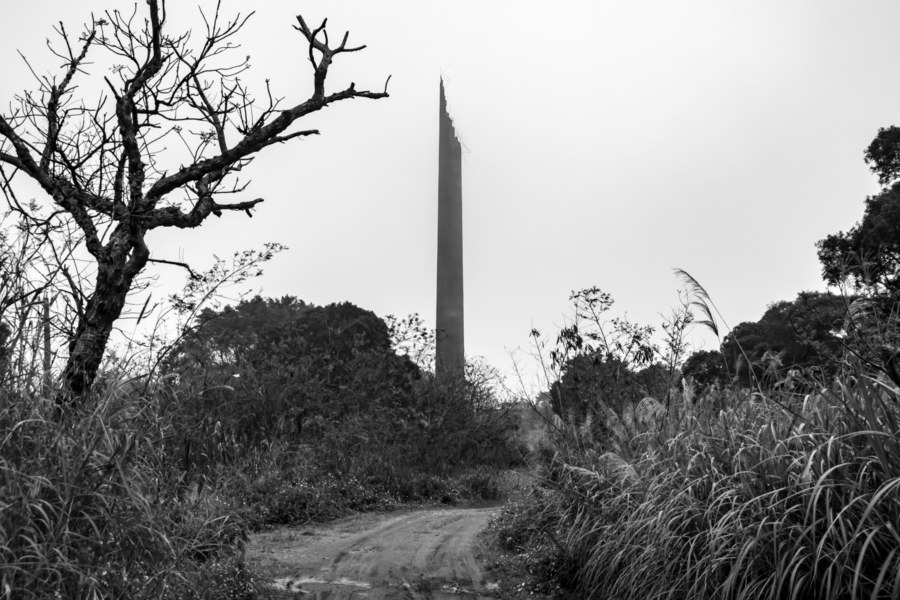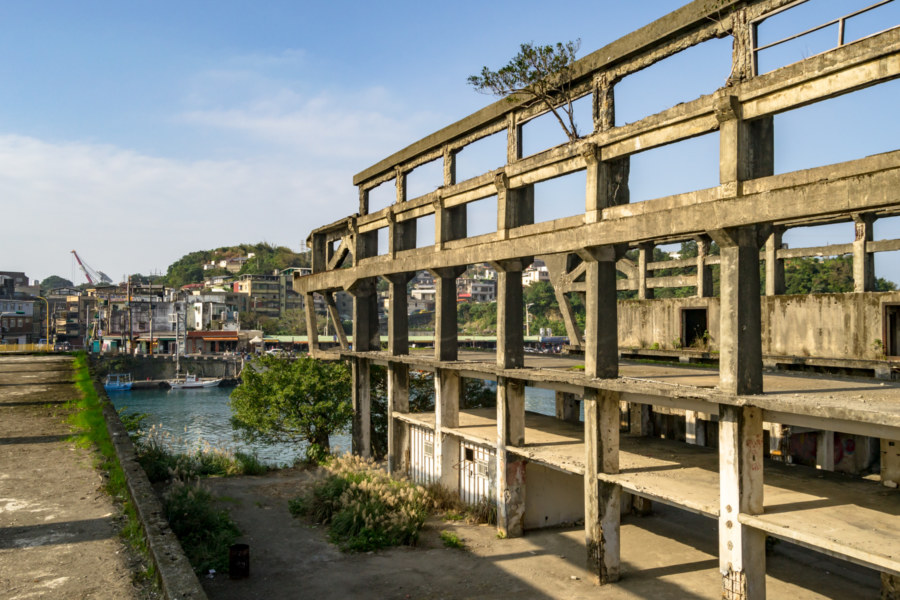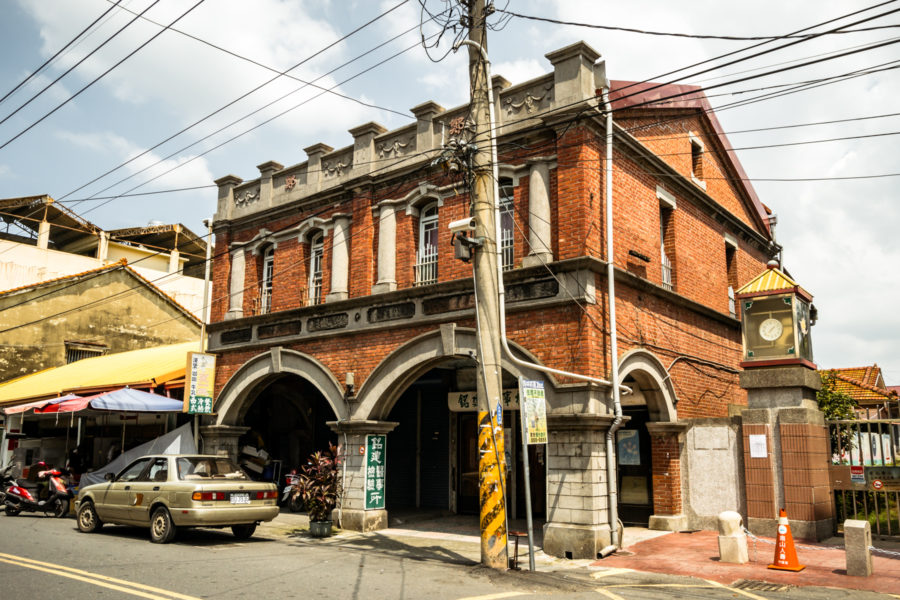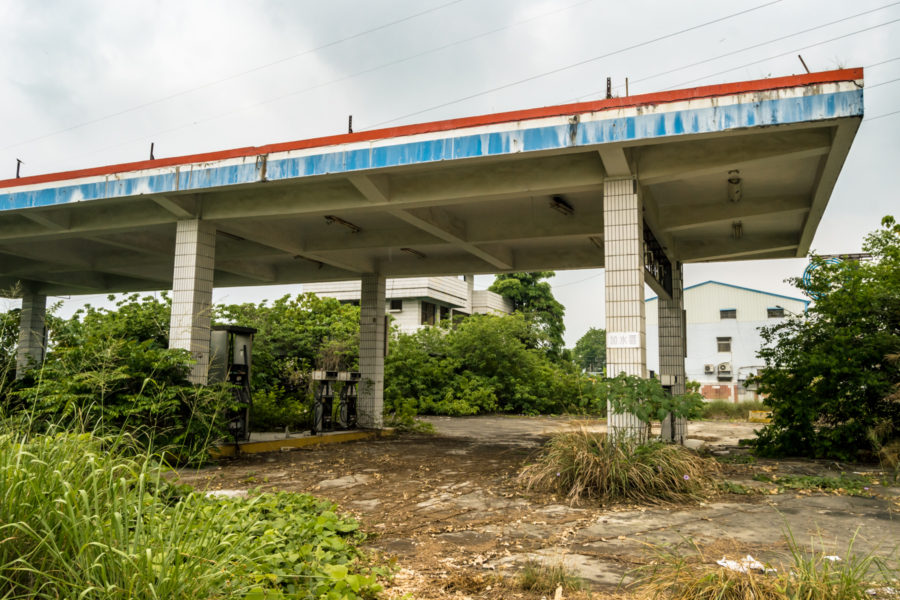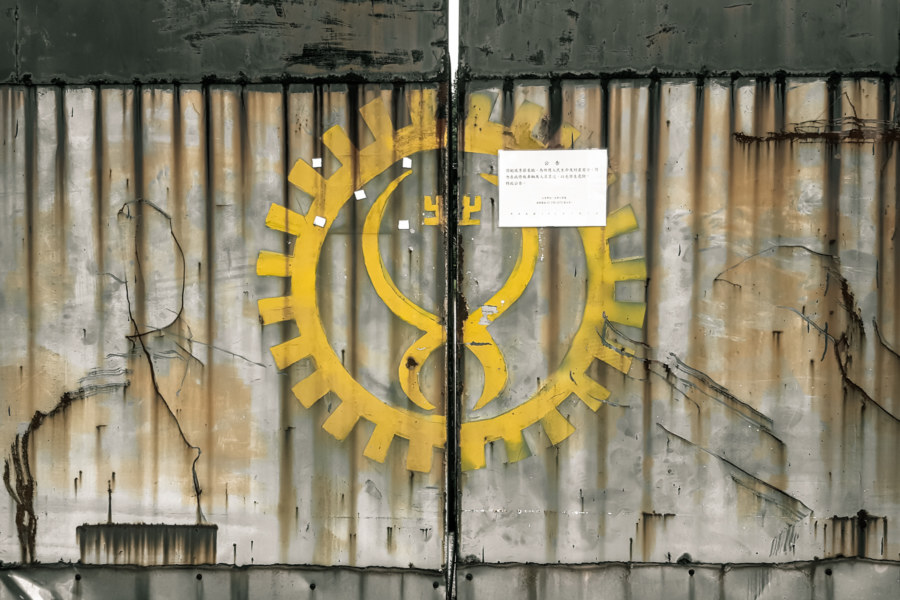I chanced upon the ruins of the RSEA Marble Factory (榮民大理石工廠) while riding around the industrial park on the north side of Hualien City sometime in early 2017. It wasn’t immediately obvious what this derelict factory produced so I decided to stop and take a closer look. Although much of this sprawling site had already been cleared, a few half-demolished buildings remained. In one of these I found a pallet full of product samples and several references to marble, answering the first of many questions on my mind. But there’s always more to examine if you’re curious, so let’s dig into the archives and see what can be learned about this abandoned industrial site in Hualien, Taiwan.
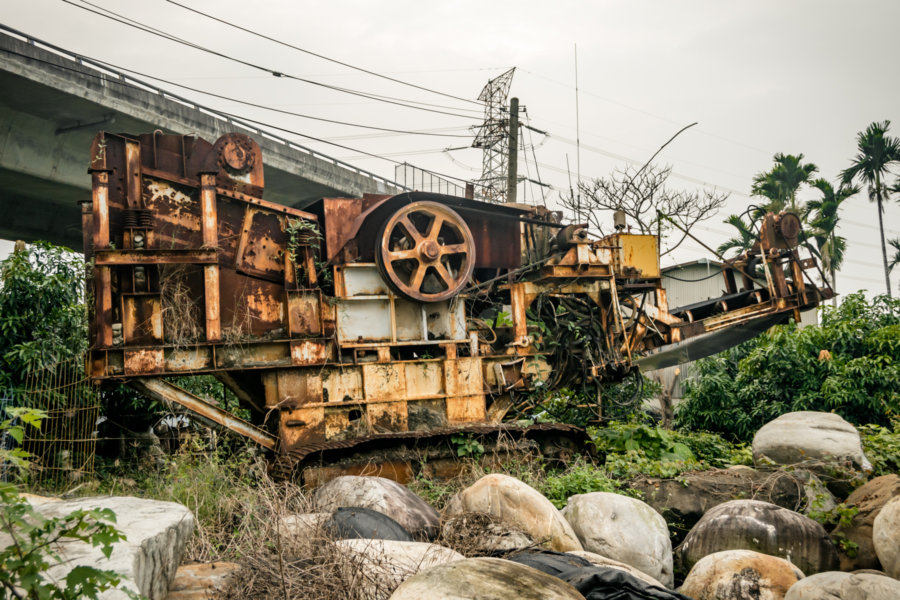
Machines conspiring to create the technological world we live in. See also: commercial, residential, buildings, and urban.
Adjacent Terms
Taiwan Motor Transport Maintenance Depot 台灣汽車客運公司機料廠
Shulin is a heavily industrialized district of approximately 185,000 residents on the southwestern periphery of Taipei. Until recently it was home to one of the most well-known large-scale ruins in the metropolitan area: the former Taiwan Motor Transport Maintenance Depot (台灣汽車客運公司機料廠), more generally known as the Shulin Factory. This abandonment was far from secret—it was regularly used for photo and video production, airsoft and paintball games, flying drones, practicing graffiti and street art, and the occasional underground techno party. It was so popular, in fact, that it attracted several con artists who impersonated security guards and the property owner to charge a fee for usage of the site, occasionally extorting large sums from more professional operations, which eventually led to their arrest. As for the history of the site itself, Tobias at Only Forward has published an extremely thorough account of this ruin, and I don’t have very much to add apart from my own original photos from two separate visits to the now-vanished site.
Linkou Shengtai Brick Kiln 林口勝泰磚窯
Linkou, now the fastest-growing suburban district in the greater Taipei area, was once home to more than 30 brick factories, the highest concentration in northern Taiwan. Shèngtài Brick Kiln (勝泰磚窯), at the far northern extent of the Linkou Plateau, is one of the last remnants of this once-flourishing brick-making industry. Numerous ruins can be found across the sprawling site but the most impressive is a Hoffmann kiln, easily identified by its broken chimney. Hoffmann kiln technology was introduced to Taiwan during the Japanese colonial era but this particular kiln only dates back to the mid-1960s, and it has now been abandoned for many decades.
Agenna Shipyard 阿根納造船廠
Āgēnnà Shipyard 阿根納造船廠 is among the most popular abandoned places in northern Taiwan. It is located in the historic port city of Keelung across the narrow Bāchǐmén Channel 八尺門海峽 from Hépíng Island 和平島, site of the first Spanish settlement in Taiwan, and just around the corner from the equally photogenic Zhèngbīn Harbour 正濱漁港. The shipyard opened in 1967 but was only in business until the 1980s. After many years of neglect the skeletal ruins of the shipyard aroused renewed interest in 2016 when the current leaseholder attempted to demolish the structure. An immediate public outcry prompted the government to designate the shipyard a heritage property, and the cultural bureau is now formulating plans to develop the area into a tourist attraction of some kind. In the meantime, the crumbling ruins of the former shipyard attract hundreds or even thousands of daily visitors.
Taiwan Summer Road Trip 2017: Taichung to Nantou
In the summer of 2017 I embarked upon a series of road trips around central and southern Taiwan. I began in Taichung and ended up riding as far south as Kaohsiung over the course of several months. It was not one continuous journey; I would head south, ride for several days, stash the scooter at a train station, and return to my residence in Taipei before doing it all over again. There wasn’t a lot of planning involved, nor were these trips entirely random. Usually I had some idea of what to see and where to go, but there were also many serendipitous discoveries along the way. Ultimately I gathered material for more than 50 posts, many of which have already been published. This introductory post gathers an assortment of photos from the first segment of the trip from Taichung to Nantou, with particular emphasis on the districts of Taiping, Puli, and Shuili.
Yicheng Cannery 義成罐頭工廠
The corpses of a thousand factories lay strewn across the plains of central and south Taiwan, stark reminders of an extraordinary period of economic growth in the latter half of the 20th century. Those located in more rural areas are readily forgotten and may remain derelict for years to come—but the more prosperous districts are busily excising these unsightly engines of economic growth from their urban landscapes. Progress is inconsistent, however, and it isn’t at all unusual to chance upon the hulking ruins of inner city factories that have yet to disappear. One such factory is the Yìchéng Cannery 義成罐頭工廠, an impressive complex hemmed in on all sides by residences in a network of winding alleyways not far from the train station in Yuanlin, the second-largest city in Changhua. No doubt this ugly eyesore will be demolished sometime in the near future—but in the meantime it has become a shadow world for local youth and curious outsiders such as myself.
Postcards From Ershui 二水明信片
Ershui is a rural township located in the southeastern corner of Changhua, bordering Yunlin and Nantou. Ershui Station 二水車站, constructed in 1935, is the primary point of transfer between the Main Line 縱貫線 of the Taiwan Railway Administration (TRA) and the Jiji Line 集集線, a tourist railway leading into the interior. Ershui, which literally means “two water”, is named after the Bābǎo Canal 八堡圳, an extensive system of artificial waterways still responsible for irrigating much of the Changhua Plain 彰化平原 three centuries after it was devised. During the Japanese colonial era this small town prospered as a center of woodworking while farmers in the countryside cultivated bananas, grapes, guava, and tobacco, among other crops. Nowadays it is mainly known as a sleepy stopover on the way to parts beyond—but a closer look will reveal several points of interest for anyone curious about Taiwanese history, architecture, and vintage style.
Nanyun Gas Station 南雲加油站
Nányún Gas Station (南雲加油站) is one of hundreds of abandoned gas stations found all around Taiwan. It was formerly affiliated with CPC Corporation (台灣中油), a state-owned enterprise that controls or supplies 80% of gas stations in the nation, and located on a section of Provincial Highway 3 in Yunlin known as Línshān Highway (林山公路), for it connects Linnei with Zhushan in neighboring Nantou. It was likely abandoned more than a decade ago, and for reasons that are less mundane than you might expect.
Life Is a Gas
Gas tanks next to an old tobacco barn in Eastern Taiwan.
Two weeks ago I noticed this stack of natural gas tanks outside the Fènglín Tobacco Barn 鳳林菸樓 in Dàróng First Village 大榮一村, one of several sites identified as Tobacco Barn Cultural Settlements 菸樓文化聚落 in the Huādōng Valley 花東縱谷. Having spent some time last year exploring remnants of the tobacco industry in Taichung I figured it might be interesting to sample what might be found out east. I’ll have more to share from that mission at a later date—but for now, these tanks shall serve as a placeholder for future elucidations.…
Traces of an Army Maintenance Depot
Xinyi is now one of the most expensive and upscale parts of Taiwan but it hasn’t always been that way. Decades ago it was an undesirable area on the edge of the city with a significant military-industrial presence, traces of which still remain if you know where to look. The open expanse of parks and parking lots around the intersection of Xìn’ān Street (信安街) and Wúxìng Street (吳興街) immediately to the west of Taipei Medical University (臺北醫學大學) is one such trace.
